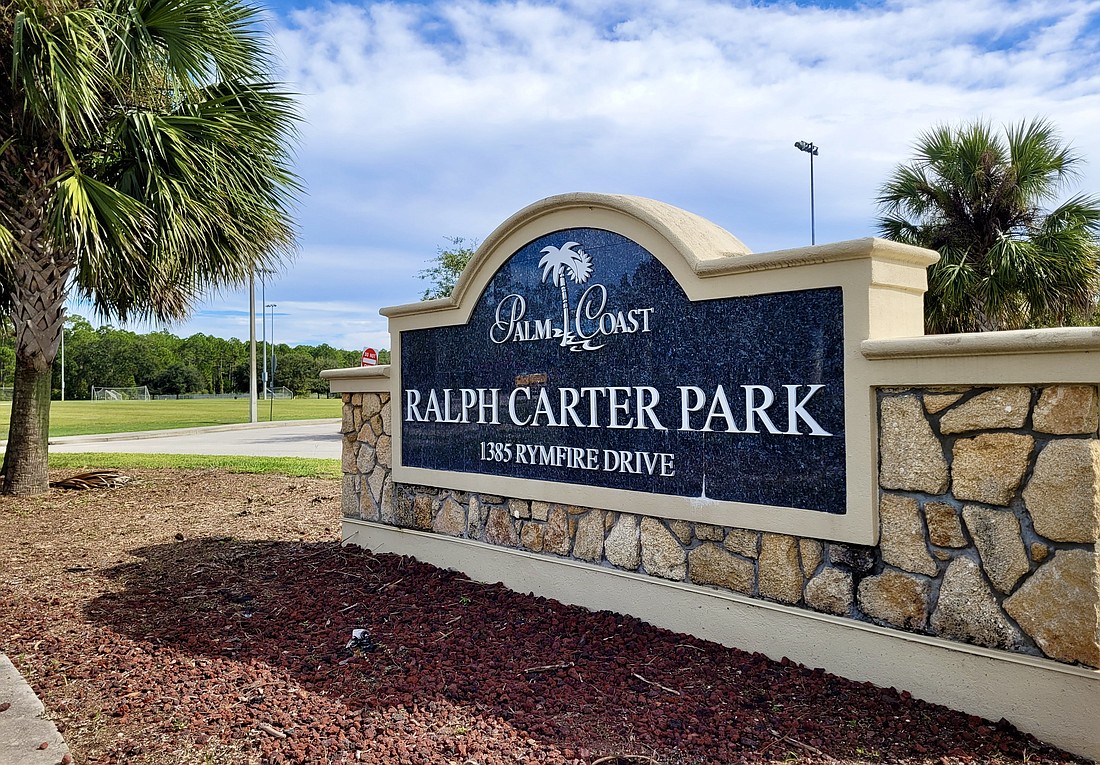- January 4, 2025
-
-
Loading

Loading

As the Planning our Parks initiative comes to a close, Palm Coast is looking for actionable ways to address the needs found during the survey process.
The consulting firm BerryDunn has spearheaded the county’s and city’s Parks and Recreation Master Plan over the last several months and developed action items for the county and city to implement over the next five to 10 years.
The first step is to address the city’s low-scoring component areas, BerryDunn consultant Art Thatcher said during a presentation of a draft of the POP master plan at an Oct. 17 City Council meeting.
The Planning our Parks initiative began in February. While residents completed virtual and mailed surveys, teams surveyed the city’s 14 parks and many trailheads for amenities and any needed upgrades.
The surveys found that most Palm Coast and Flagler County residents want additional park and recreation facilities with access to water and kayaking. Of the most-used amenities at the recreation facilities, 54% of survey respondents said they use the restrooms the most.
The master plan will return to the City Council in around six weeks for final approval and adoption, Thatcher told the Observer.
The draft of the plan outlined the six lower-scoring components in Palm Coast and what should be done to improve each component.
The James F. Holland Memorial Park Splash Pad was at the top of the list, but is already being repaired. Also at Holland Park, BerryDunn recommended adding a concession stand.
The Indian Trails Sports Complex was rated higher than the other components on the list — receiving a 4 rating instead of a 1 — but the playgrounds and the diamond field were noted as needing upgrading, Thatcher said.
The Palm Coast Community Center’s trailhead and park also made the list. Thatcher suggested the city add amenities like restrooms, drinking fountains, showers and signage.
The fields at Ralph Carter Park were the final low-scoring item. Thatcher said BerryDunn recommended regrading and renovating the fields and adding historical signage. Palm Coast Parks and Recreation Director James Hirst said the city has already budgeted money to work on the fields this year.
BerryDunn provided cost estimates for each of these potential projects — ranging from $750,000 to $100,000 — and a list of places the city can look for help funding the projects in the future, Thatcher said.
Thatcher said the BerryDunn team has divided a list of 10 total action items into short-term, mid-term, long-term and ongoing projects, ranging over three to 10 years. The action items include developing more staffing for regular park maintenance, implementing more recreation programs for people with special and unique needs, and working with developers to include more park land for residents.
In an interview with the Observer, Thatcher said developers benefit by including green spaces because green spaces increase the value of a home.
“We know that parks, if you have a home that’s within, you know, 500 feet of a park, it increases its value by 10%,” Thatcher said.
Hirst said the city has already completed some of the smaller items BerryDunn’s team has identified, like adding informational QR Codes to park signage.
During the presentation, Palm Coast Mayor David Alfin asked Thatcher to consider adding an addendum to the study with a focus on how the city’s parks should accommodate growth and future generations.
“I think prior city councils have had the luxury of making sure that the amenities that we have here were at a top shelf,” he said, “but I think today we have to balance that with the next several generations that are coming forward.”